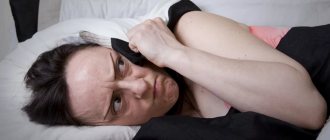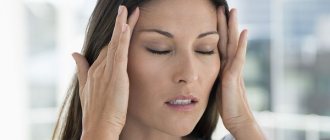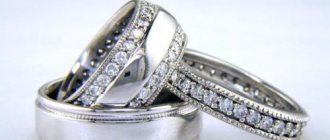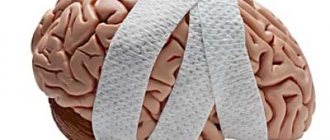Every person, no matter how healthy he is, has experienced a headache, that is, a migraine, at least once in his life.
Symptoms of a neurological, chronic disease such as migraine are severe pain (constant or periodic) in the area of one half of the head, less often in two. The main difference between her symptoms is the absence of any significant traumatic brain injury, brain tumor or stroke. Migraine pain is not caused by tension and therefore has a pulsating nature. According to statistics, migraine affects women more often than men, and the frequency of attacks varies from two to eight per calendar month. Factors causing attacks are:
- Overstrain of a physical or nervous nature;
- Foods that can cause pain - nuts, fish, cheese;
- The impact of alcoholic beverages on the cardiovascular system;
- Use of contraceptives that affect hormonal levels;
- Excess or lack of sleep;
- Sudden changes in weather conditions.
First aid for migraine:
- First of all, when you experience headaches, take any available medication that you have in your medicine cabinet from categories such as non-steroidal analgesics, triptans, ergotamine preparations, caffeine, codeine, opioids and combinations thereof.
- Next, you should ensure yourself rest: lie down on the bed, resting your head comfortably on the pillow; get rid of any external irritants, such as bright lights, loud sounds; do it yourself or ask someone to give you a massage or head compress; drink strong, sweet tea or coffee.
- An hour after taking the medicine, analyze your condition: if the pain has decreased, but has not disappeared completely, then take the second dose; if it does not go away, then you should contact qualified specialists for appropriate treatment.
Sports for migraine attacks
Some sports also do not cause concern: light running, aerobics, fitness. If there is no connection between migraine and training, then you can play sports, but not very intensely.
Regular but moderate exercise normalizes the autonomic system, increases resistance to stress and increases vascular tone. But if even morning exercises lead to the development of a migraine attack, then you should stop training to avoid severe pain.
By the way, swimming is contraindicated, since due to hyperventilation of the lungs and the position of the head above the surface of the water, tension in the upper body increases and, accordingly, pain manifests itself.
Fighting headaches - stretching exercises
1. Stand up straight and raise your arms in a straight line. Then lower them and relax. Another move is to raise your arms up, then move forward and lower down. Later, raising your arms up and down. Finally, they should be relaxed.
2. Press your ear to your shoulder. Tilt your chin forward and then turn it diagonally toward your chest. Press your head lightly with your palm. Relax your muscles and repeat the exercise on the other side of your body.
Can migraines be prevented?
To prevent headaches, you need to enter a position that eliminates tension in the forehead area. She must be completely relaxed. This will reduce stress, slow down the pulse and bring the body back to normal.
This is achieved by performing Shavasana (“dead man’s pose”), but in three versions.
- "Forehead on the back of the chair." This relaxes the head area and neck muscles.
- "Palms on the chair." The pose is reminiscent of Downward Facing Dog asana. Place your palms on the seat of the chair and slowly move back so that your arms form one line with your torso. You need to strive to lengthen your neck, which will be the correct execution.
- "Forehead on a stand." Calms the mind. You should get on all fours, resting your heels against the wall. Having accepted the “Downward Facing Dog” asana, the forehead is placed on a stand and the skin is moved towards the chin. Breathing should be free and calm.
Physical exercise
Regular and proper physical activity is important to prevent attacks. An excellent choice could be joint exercises, which are very useful and have almost no contraindications.
The following exercises are considered the best:
- Perform smooth movements of your head in a circle on the sides, trying to maximize the amplitude.
- Alternate a deep tilt of the head forward with a smooth tilt back, fixing the pose at the extreme point.
- Slowly stretch your head and neck to the sides and back and forth.
- Pull your head and neck up, fixing your shoulders.
- Press the back of your head onto the wall with movements of varying intensity.
- Roll the back of your head to the sides along the wall or back of a chair.
When performing all movements, breathing should be deep and uniform.
It is better to inhale air through the mouth and exhale through the nose. The number of repetitions of each exercise is 10-15 times . But after doing this you should not feel any tension or fatigue.
You can supplement the presented complex with yoga; almost any asanas are suitable here, because Yoga is fundamentally aimed at improving well-being. Also, for prevention, you can use various methods of physiotherapy and massage.
Treatment of migraine with an unconventional method
The benefit of yoga for this disease is that it does not just relieve pain, like pills, but eliminates the causes of the disease (tension and frequent stress). As a result, yoga helps against migraines much better than medications.
You can master yoga asanas on your own, but it is better to attend special courses. In any fitness center there are groups of oriental health gymnastics, where they teach techniques to combat various ailments.
A few yoga sessions are certainly not enough to get rid of migraines. Only regular classes in compliance with the recommendations of the instructor, who selects the necessary set of asanas that can achieve effective results.
Complete victory over the disease will be achieved gradually. The first signal of cure will be a reduction in the number of attacks and their intensity. Over time, the pain will go away completely.
What yoga asanas are used for migraines? Several main poses are recommended:
- Vajrasana,
- Supta vajrasana,
- Marjariasana,
- Shashankasana,
- Tadasana,
- Shavasana.
Self-mastery of poses is not advisable. To avoid mistakes, it is better to contact a yoga therapy specialist. Yoga for headaches has been proven effective. All exercises are designed to eliminate migraine attacks and are an excellent way to prevent the disease.
When practicing yoga, you need to combine asanas with proper breathing. Correct execution of all exercises helps to easily endure pain and reduces the intensity of attacks. But you should avoid poses that put pressure on the diaphragm.
Physical activity beneficial for migraines
These are any light exercises, warm-ups, stretching. But, again, watch your head - don't lower it down. Exercises for the shoulders are useful - they improve blood flow in the neck. The main thing is to exhale when exerting effort and inhale during a short moment of rest.
Light aerobic exercise, such as walking, is very useful. You can walk as long as possible as long as your legs can bear it. Again, don't overwork yourself. If the sun is shining brightly outside, be sure to wear sunglasses, since bright light is also one of the provocateurs of migraines.
Riding a bicycle or an exercise bike is also beneficial. Yesterday I even reduced the pain by just riding a stationary bike for 20 minutes. However, I do not recommend that you exercise if you have pain, as this can have unpredictable consequences. It helped me, but it may well make things worse for you.
Swimming is also useful, but not in any style. Try not to tilt your head too far back, as this will compress the blood flow and impair blood supply to the brain.
In general, dosed physical activity can really help in the prevention of migraines, but from personal experience and from research by doctors, I can say that this alone is unlikely to help. Often you cannot do without medication if you have frequent and severe attacks. If attacks are rare, then you can avoid swallowing chemicals and just study. An active lifestyle will not only help prevent migraines, but also help you feel much better. I tested it myself, it works











